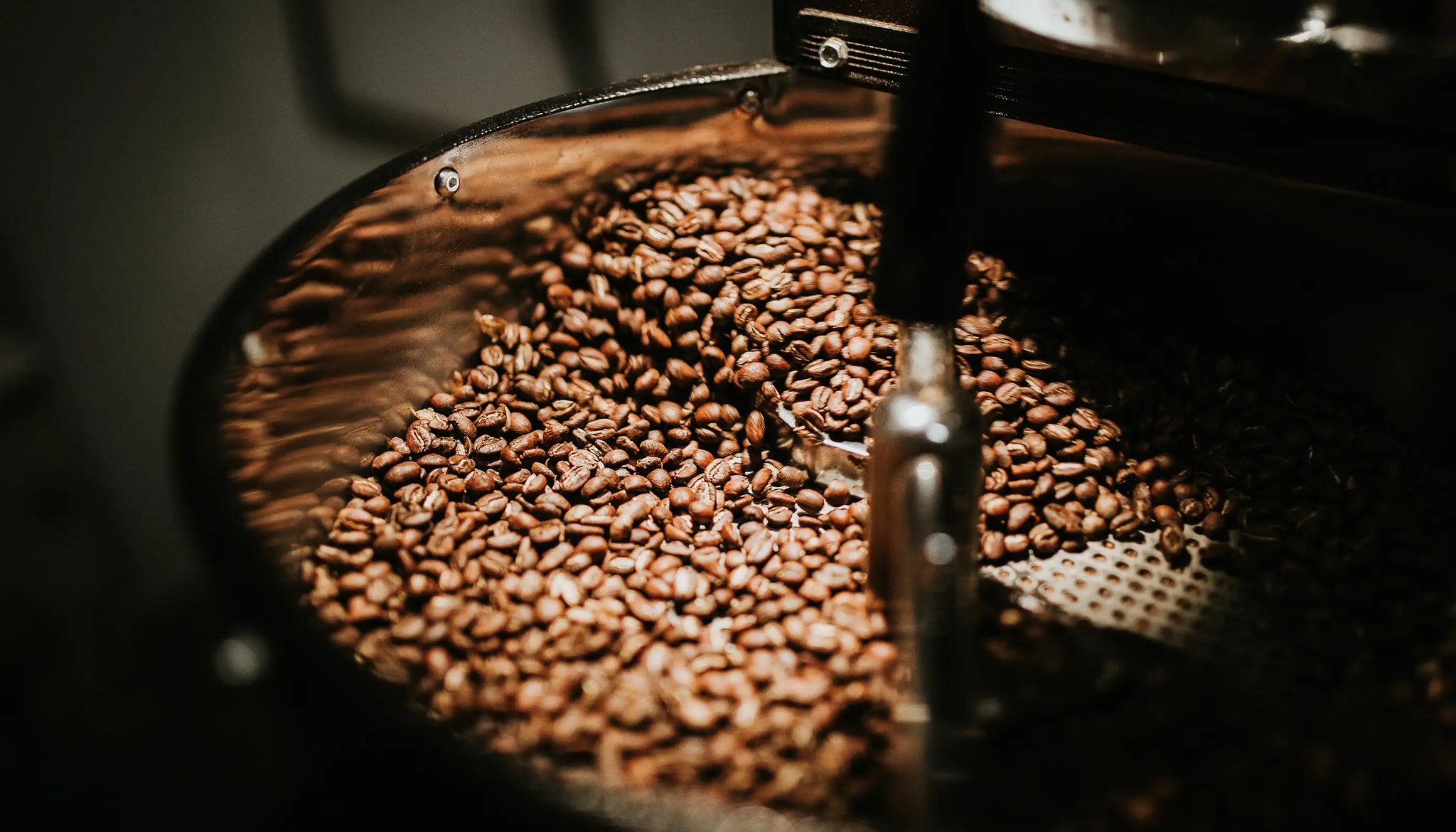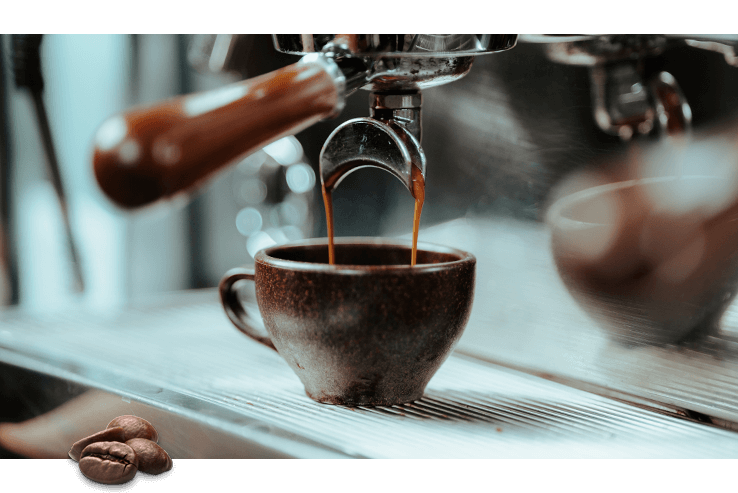SOE Single Origin Espresso – Recommended for Precision Brewing Methods
SOE Single Origin Espresso – Recommended for Precision Brewing Methods
Blog Article
Checking Out the Rich Flavors of Coffee Beans: a Deep Dive Into Coffee and Blended Coffee Beans
When you explore the abundant flavors of coffee beans, you uncover a complicated globe where each selection brings its own personality to your mug. As you navigate with the art of coffee and the creativity behind combined coffees, you'll begin to value the subtleties that make each sip unique.
The Origins of Coffee Beans: Exploring Terroir and Flavor Profiles
When you take a sip of coffee, you're not just delighting in a beverage; you're experiencing a rich tapestry of tastes shaped by the beans' beginnings. Each area generates special taste profiles affected by climate, dirt, and altitude. As an example, beans from Ethiopia usually rupture with intense, fruity notes, while those from Colombia often tend to use a balanced, nutty sweetness.
As you explore different beginnings, you'll discover exactly how terroir-- the ecological elements impacting a plant-- plays a vital role - Single Origin Espresso. The exact same coffee selection can taste considerably various depending on where it's grown
When you think about these variables, you start to value the complexity behind your cup. Each sip tells a story of the land and the farmers that supported the beans. So, following time you indulge, think of the trip your coffee took prior to it reached your hands, and appreciate those intricate flavors that reflect its origin.
Comprehending Coffee: The Art and Science Behind the Brew
When you believe regarding espresso, it's not almost the solid taste; it's likewise about the methods that bring it to life. Comprehending exactly how different preparation approaches influence taste can transform your developing experience. Allow's check out the ins and outs of espresso preparation and reveal the special flavor profiles that make each cup unique.
Coffee Preparation Techniques
Coffee preparation is both a scientific research and an art, integrating accurate techniques with a deep understanding of coffee. To begin, you'll wish to pick high-quality, fresh roasted beans and grind them finely for perfect removal (Single Origin Espresso). The work size is essential; as well coarse, and your coffee will be weak, as well fine, and it'll be bitter
Following, tamp the grounds equally in the portafilter to ensure uniform removal. When you lock it into the machine, purpose for a brewing temperature level between 190 ° F and 205 °
F.As you draw the shot, look for the perfect removal time-- around 25-30 secs. The result needs to be a rich, luscious espresso with a stunning layer of crema on top. With method, you'll master these strategies.
Taste Accounts Described
The globe of espresso uses an abundant tapestry of flavor profiles that can raise your coffee experience. You'll discover an equilibrium of level of acidity, bitterness, and sweetness when you take that initial sip. Each coffee bean lugs unique notes, from floral and fruity to nutty and chocolaty. Light roasts often showcase brilliant acidity and lively flavors, while dark roasts present deeper, bolder tones.
Recognizing these accounts aids you select the ideal coffee for your taste buds. Try out different blends can reveal unexpected combinations. For example, a well-crafted mix could integrate the brilliant notes of an Ethiopian bean with the rich, chocolatey undertones of a Brazilian bean. Welcome the trip of finding espresso's diverse tastes, and you'll change your coffee ritual into an amazing journey.
Processing Methods: Just How They Influence Taste and Fragrance
While it may appear that the beginning of coffee beans is the most considerable consider identifying their taste and scent, the processing approaches utilized post-harvest play a just as essential function. You'll find that these approaches can dramatically change the final preference profile of your mug.
For example, the washed procedure eliminates the fruit from the beans prior to fermentation, typically leading to a cleaner, brighter taste. The all-natural process leaves the fruit undamaged during drying, resulting in a sweeter, fruitier account.
Other techniques, like honey processing, strike a balance, permitting some fruit mucilage to stay, giving a special complexity.
Each processing strategy engages with the beans' fundamental features, enhancing or silencing details flavors and scents. When you sip that espresso or mixed coffee, bear in mind that the journey from cherry to cup is influenced not simply by beginning yet also by how those beans were processed.
Toasting Strategies: Opening the Complete Potential of Coffee Beans
Roasting strategies are important for exposing the full capacity of coffee beans, as they transform raw, eco-friendly beans into the aromatic, tasty coffee you take pleasure in. The selection of toasting approach-- light, tool, or dark-- substantially affects taste accounts.
A slower roast at lower temperature levels enables for complex flavors to create, while a quicker roast can escalate resentment. By mastering these strategies, you'll expose a globe of flavor, elevating your coffee experience to brand-new heights.
The Magic of Blended Coffee: Developing Special Flavor Experiences
Developing a special taste experience with mixed coffee can transform your early morning ritual right into an exploration look at this now of preference. By combining various beans from various areas, you can reveal a symphony of tastes that raise your mug to new elevations. Each blend deals a distinct account, stabilizing sweet taste, acidity, and body to develop something really unique.
When you choose a blend, you're not simply picking a coffee; you're choosing a journey across varied landscapes and cultures. Exploring with various combinations enables you to uncover your personal faves, whether you enjoy fruity notes or abundant, chocolatey touches.

Tasting Notes: Recognizing the Nuances in Your Cup
As you sip your coffee, you may see a range of flavors dancing on your palate, each exposing the details of the beans. You may taste the brilliant level of acidity evocative citrus or the deep, abundant notes comparable to dark chocolate. The sweetness can evoke honey or caramel, balancing the overall profile magnificently.
Pay focus to the body of the coffee-- does it really feel ventilated and light, or is it full and creamy? The finish, as well, uses hints; a lingering aftertaste might mean nuttiness or floral undertones.

Do not forget to check out the one-of-a-kind features of various beginnings, as each area gives unique flavors - Single Origin Espresso. For instance, Ethiopian coffees typically existing fruity notes, while Colombian beans might showcase a more spherical sweetness. By recognizing these subtleties, you'll grow your gratitude for each mug, raising your coffee experience to brand-new elevations

Brewing Methods: Optimizing Flavor Removal for each Bean
When you explore the numerous brewing approaches, you'll find that each strategy can significantly influence the taste profile of your coffee. From French press to pour-over, each approach extracts various compounds, boosting or muting specific notes. As an example, utilizing a French press allows oils to stay in the brew, producing a richer preference, while pour-over highlights quality and brightness.
Temperature and grind dimension additionally play necessary roles. A coarser grind functions best for cold brews, while a great grind is suitable for coffee. Try out water temperature level-- between 195 ° F and 205 ° F-- can expose hidden flavors, also.
Don't forget steeping time; a quick extraction can bring about sour notes, while over-extraction may generate anger. By changing these variables, you can make best use of flavor removal and absolutely elevate your coffee experience. Take pleasure in the trip of discovering what technique finest his comment is here matches your taste!
Frequently Asked Concerns
What Is the Suitable Water Temperature Level for Brewing Coffee?
The suitable water temperature level for brewing coffee's between 195 ° F and 205 ° F. If you make use of water that's also hot, you'll over-extract tastes; also cool, and you won't extract enough. Objective for that pleasant place for the very best mixture!
Just How Does Grind Size Impact Coffee Flavor?
Grind size significantly impacts coffee taste. Finer grinds essence extra oils and flavors, resulting in a bolder taste, while coarser grinds yield a lighter flavor. Adjusting grind size helps you achieve your desired coffee profile.
Are There Health And Wellness Perks Surrounding Alcohol Consumption Coffee?

What Is the Difference Between Arabica and Robusta Beans?
Arabica beans are smoother and sweeter, frequently including fruity flavors, while robusta beans are stronger with a bitter preference and higher caffeine web content. You'll observe these differences in aroma and developing experience.
Exactly How Can I Store Coffee Beans for Quality?
To save coffee beans for freshness, keep them in an impermeable container, away from wetness, heat, and light. You'll keep their taste longer if you just grind what you need right before developing.
Checking Out the Rich Tastes of Coffee Beans: a Deep Dive Into Espresso and Blended Coffee Beans.
When you check out the rich tastes of coffee beans, you uncover a complicated world where each range brings its own personality to your mug.When you take a sip of coffee, you're not just delighting in a beverage; you're experiencing a rich tapestry of tastes shaped by the beans' origins.Roasting strategies are necessary for revealing the complete potential of coffee beans, as they transform raw, environment-friendly beans into the fragrant, tasty coffee you take pleasure in.As you sip your coffee, you may see a spectrum of tastes dancing on your taste, each revealing the details of the beans.
Report this page